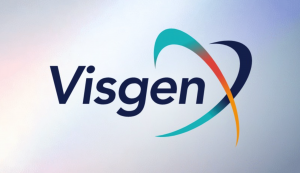ELOVL2 Enzyme Product Improves Retinal Function and Rejuvenates Retina Architecture in an Aged Mouse Model of AMD
The study, performed in the lab of Dr. Dorota Skowronska-Krawczyk at the University of California, Irvine, confirms the critical nature of the ELOVL2 enzyme.
The study elegantly demonstrated that intravitreal administration of the direct product of the ELOVL2 enzyme, 24:5n-3, significantly improved retinal function as measured by electroretinography, or ERG, and enhanced dark adaptation in 18-month-old mice, which naturally develop vision loss. Supplementation with the direct ELOVL2 PUFA product also showed a marked benefit on retina morphology including: a healthier appearing retinal pigment epithelium (RPE) layer, reduction of ApoE (a component of drusen), and reduction of complement factor 3 (known to increase the progression of dry age-related macular degeneration (AMD)). These anatomical changes correlated with a marked reversal in expression of genes associated with senescence. Notably, these positive changes were observed in just five days after administration of the ELOVL2 product.
The study further demonstrated that no improvement in visual function was observed in mice treated with the shorter precursor PUFA’s 20:5n-3 (EPA) and 22:6n-3 (DHA) which require ELOVL2 activity for further elongation. Taken together, these compelling data demonstrate that a high level of retinal ELOVL2 enzyme function is required for the production of the necessary quantity of LC/VLC-PUFA needed for retinal cell health.
“We are excited to report this data at ARVO,” stated Dr. Dorota Skowronska-Krawczyk, Ph.D. “I believe the data demonstrates two important points: one, that ELOVL2 plays the critical role in the production of the necessary fatty acids required for retinal cell health, and two, that restoring these lipids in the retina is an attractive therapeutic approach that offers the potential to improve visual function and rejuvenate retinal tissue.
“I am very proud of the innovative research being conducted in Dr. Skowronska-Krawczyk’s laboratory,” stated Dr. Baruch Kuppermann, M.D., Ph.D., Steinert Endowed Professor and Chair of the Department of Ophthalmology, and Director of the Gavin Herbert Eye Institute, University of California, Irvine. “This extraordinary study highlights a novel approach to dry AMD, a debilitating condition that is the number one cause of blindness in the elderly.”
STUDY DESIGN
18-month-old wild type animals were injected intravitreally one time with selected PUFAs and their visual function was tested 5 days post-treatment. Scotopic and photopic photoresponses, the recovery of rod maximal response and sensitivity during dark adaptation were measured by electroretinography (ERG). In addition, mouse vision was evaluated by optomotor responses (OMR). The presence of age-related phenotypes was tested using RNAscope and immunostaining to detect senescence marker p16Ink4a and components of age-related subretinal deposits. Retinas and eyecups were collected for multi-omics analysis to uncover the molecular mechanism of the observed improvement in vision. For more information on the study, please visit: https://eppro02.ativ.me/web/page.php?page=session&project=ARVO24&id=4053015.
VGX-0111
Visgenx’s lead product VGX-0111, is a candidate gene therapy being developed for the treatment of dry age-related macular degeneration (AMD). VGX-0111 delivers an ELOVL2 transgene to the retina to restore healthy levels of ELOVL2 expression and thereby reestablish physiologically normal LC/VLC-PUFA retinal levels, potentially resulting in the slowing or halting of vision loss from dry AMD.
ABOUT DRY AGE-RELATED MACULAR DEGNERATION
Dry age-related macular degeneration (AMD) is a leading cause of blindness. The underlying cause of dry AMD remains unknown; however, recent studies suggest that a decline in the biosynthesis of certain long chain and very long chain polyunsaturated fatty acids (LC and VLC PUFA) plays an important underlying role. The ELOVL2 enzyme plays a central role in the biosynthesis of LC and VLC PUFAs. During aging, expression of the ELOVL2 gene declines leading to a reduction in the LC and VLC PUFAs necessary for vision. VGX-0111 is an experimental gene therapy intended to increase expression of ELOVL2. It is thought that restoring physiological ELOVL2 expression will increase levels of LC and VLC PUFAs in the retina and slow or halt the progression of dry AMD.
ABOUT VISGENX, INC.
Visgenx, Inc. is a biotechnology company focused on developing gene-based therapeutics for degenerative retinal diseases. Visgenx’ initial product is VGX-0111, a gene therapy candidate being developed for the treatment of dry Age-related Macular Degeneration (AMD). Approximately 200 million people suffer from dry AMD globally and it is a leading cause of blindness. VGX-0111 is based on the ELOVL2 gene, which is required for the biosynthesis of lipids necessary for the function and survival of retinal cells. ELOVL2 expression declines with age resulting in declining LC/VLC-PUFA levels which may be an underlying pathology of dry AMD. VGX-0111 is intended to restore a normal level of ELOVL2 expression thereby slowing or halting the vision loss resulting from dry AMD. For more information on Visgenx, visit www.visgenx.com.
Forward Looking Statements
This press release contains forward-looking statements related to Visgenx, Inc., under the safe harbor provisions of Section 21E of the Private Securities Litigation Reform Act of 1995, that are subject to risks and uncertainties that could cause actual results to differ materially from those projected. Forward-looking statements include statements regarding the potential for VGX-0111 as a treatment for Dry AMD. Risks and uncertainties that could cause our actual results to differ materially and adversely from those expressed in our forward-looking statements include that the therapy may not be effective at treating Dry AMD. Investors are cautioned not to place undue reliance on these forward-looking statements, which speak only as of the date of this release and we undertake no obligation to update any forward-looking statement in this press release except as required by law.
###
@ 2024 Visgenx, Inc. All Rights Reserved.
William Pedranti
Visgenx
william@visgenx.com
Visit us on social media:
LinkedIn
Other
Legal Disclaimer:
EIN Presswire provides this news content "as is" without warranty of any kind. We do not accept any responsibility or liability for the accuracy, content, images, videos, licenses, completeness, legality, or reliability of the information contained in this article. If you have any complaints or copyright issues related to this article, kindly contact the author above.

